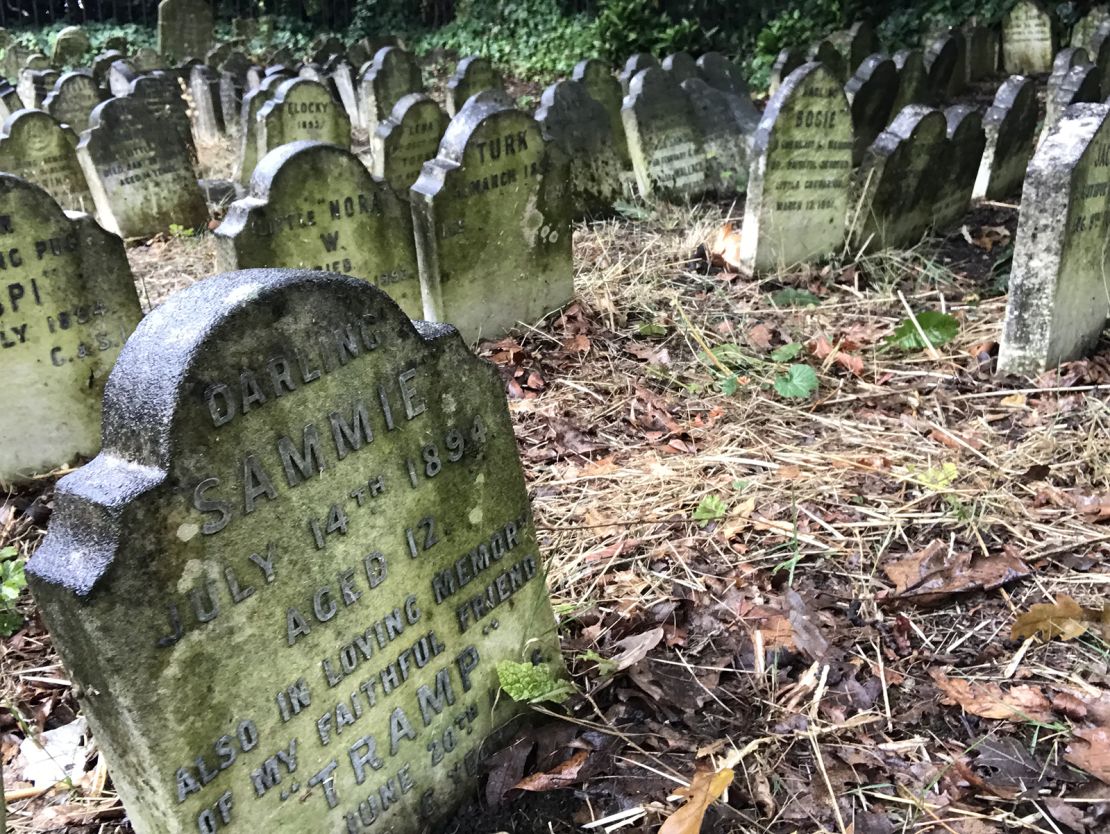Editor’s note: Eric Tourigny is a lecturer in historical archeology at Newcastle University, UK. His osteological and material culture research draws on historical texts to examine changing animal relationships in Europe and North America over the past 500 years. The views expressed in this commentary are his own. Read more THINK on CNN.
CNN
–
Why do we bury our dead loved ones in a cemetery? A primary goal is to give survivors a chance to grieve and get a sense of closure. The cemetery is a place for the living as much as it is a place for the dead.
But what about when we lose loved ones – but our pets?

The Spanish City of Barcelona has recently announced that it will invest in the construction of The first public cemetery Public Public. Set to open next year, it will offer funerals and cremations – which are estimated to be around 7,000 carried out each year.
For me, as a person who has spent many years researching the development of cemeteries in cemeteries elsewhere in the world, this news is shocking. Barcelona is a densely populated city with limited private land – one of which 50% of families own a pet.
How can a city that Home to 180,000 dogs no longer a public cemetery? Until now, the service was provided only by the private sector, according to Barcelona councilor for climate emergency and ecological transition, Eloi Badia. He added that the initiative funded by the municipality was motivated by “constant public demand.”
After that, public cemeteries spread throughout Europe and America Since the late 19th century. The first Public Cemetery in Britain appeared in Hyde Park in London in 1881. The Hartsdale Pet Cemetery in New York was established in 1896, followed a few years after the Cimetière in Paris Ciens in 1899.
I became interested in the history of Modern Pet burial practices in Date while examining the archaeological record of a century-old house in Toronto. I found a (very) large dog buried in the back garden which, according to the historical record, was occupied between 1840 and 1870.
This dog survived to an old age but, sadly, suffered from Degenerative Joint Disease and severe infection in his last months. His ailments continued in such a state that suggests he received some level of care in his final weeks. He was then buried in a personal plot behind the family home.
This old dog got me thinking about the different ways people interact with their pets’ bodies after death. Could this behavior be a reflection of the relationships they hold with their animals in life? In this case, why take the time to properly bury a dog in its own space when other, more convenient options are available?

This was, after all, a time when people often discarded their dead pets in the river, or perhaps sold their bodies for meat and skin.
Good hygiene is an obvious reason for choosing a burial – no one wants animal bodies to rot on the street or in their garden – but it cannot be attributed to a personality and gravestone.
The most straight forward option is to dispose of a dead animal with the household waste. But such treatment obviously feels less than ceremonial and doesn’t provide appropriate emotional closure to what is likely an important relationship.
Like burying people, burying pets is an intimate cultural practice, one that changes over time and reflects changing relationships with beloved creatures.
I Study of the historic Graves and Epitaphs of Britain From the Victorian era to the present it shows a change in the human-animal relationship. In the 19th century, gravestones were often dedicated to a “loving friend” or “devoted companion,” suggesting that pets were often considered important friends.
In the early 20th century, pets became members of the family – evidenced by the appearance of family surnames on gravestaons written by “Mummy and Papa.”
The change in society’s attitude to the role of animals in the aftermath can be found. Fast forward a few decades later, and the gravestones are more appreciative of an earlier partnership. For example, the owners of Denny, the “brave little cat” who was buried in an East End in London in 1952, wrote in his Epitaph “God bless you until we meet again.”
I wonder what the Epitaphs in the new Barcelona cemetery reveal about the modern Catalan relationship with animals.
Over time, our methods of treating our dead animals appear to reflect a closer relationship to life. Once strictly prohibited by law, the last decade has seen many jurisdictions, such as New York state, allow the co-burial of animals created by animals and humanswhich will undoubtedly lead to a change in funerary practices and celebrations for humans and animals.
For me, the most amazing similarity between modern and historical cemeteries in cemeteries is the impressive evidence for heartbreak and walking taboos for animals.
The connection someone has with their pet can be as strong and as important as their relationship with other people. Even today, as more than 100 years ago, individuals continue to struggle to find the appropriate outlet to express their illness, hiding the sadness of recognizing social recognition of such a bond.
The RSPCA reassures the public on its website that they should not be shamed for their grief. In the UK, charities such as Blue cross and President’s Item Food Treasure Trams Offer to counsel people who have lost people.
Close relationships between humans and animals have existed for millennia, but in Western cultures, there are few acceptable ways to mourn that relationship. As society becomes increasingly accepting of the importance of human-animal relationships to our collective well-being, it is not surprising that we follow rituals similar to those that follow the loss of our closest human relationships.
With an estimated cost of € 200 ($ 217) per service at the New Barcelona Cemetery, it is important to recognize that this opportunity will be enjoyed by everyone in the city.
This is not a space for all pets in the city. Pet owners can choose to keep the remains intact inside their home or spread the ashes in a meaningful location. Online Forums and Digital Pet Cemeteries Also provide other opportunities to celebrate the relationship and express grief.
Whether one chooses a Pet cemetery or not, there are many acceptable ways to express your grief – and remember your relationship with the important animals in your life.

